Today an eagerly awaited parcel finally arrived: UPS has been just on time. A quite heavy cardboard package from Southern Germany. I couldn´t wait and cut it open: Yes, everything has been delivered, I rejoiced. The parcel had been sent two days ago from Philippi, the manufacturer and distributor for high-class electrical components, well know amongst sailors and caravaning enthusiasts. Contents of this package: A number of essential parts for my new yacht.

I insisted to have these parts sent to me first before they go to the shipyard. Just because I wanted to see with my eyes and feel with my hands what real quality is about. You know me – I am always opting for and trying to make a point for buying top-shelf products instead of cheap stuff in areas where it is really needed. The boat´s electric circuits, energy management and distribution, shore power, position lights and connected areas are a precondition to carefree, failsafe function of the boat´s primary systems. You simply do not mess around with these things.
A trusted German brand and manufacturer
In that, in collaboration with the shipyard, we defined three separate areas of parts: Essential, top-tier components, non-essential components and the batteries. For the latter, expect some really cool in-depth articles around coming spring when the batteries will be acquired and built into the boat. For the components, we divided them into two categories: The top-shelf stuff is to be used for absolute essential aspects in installations where we need high quality, longevity and ruggedness. For the other parts (expect an article to those too in the near future), usual ordinary or no-name suppliers are absolutely fine. So, let´s start with the top-shelf parts. Why Philippi then?
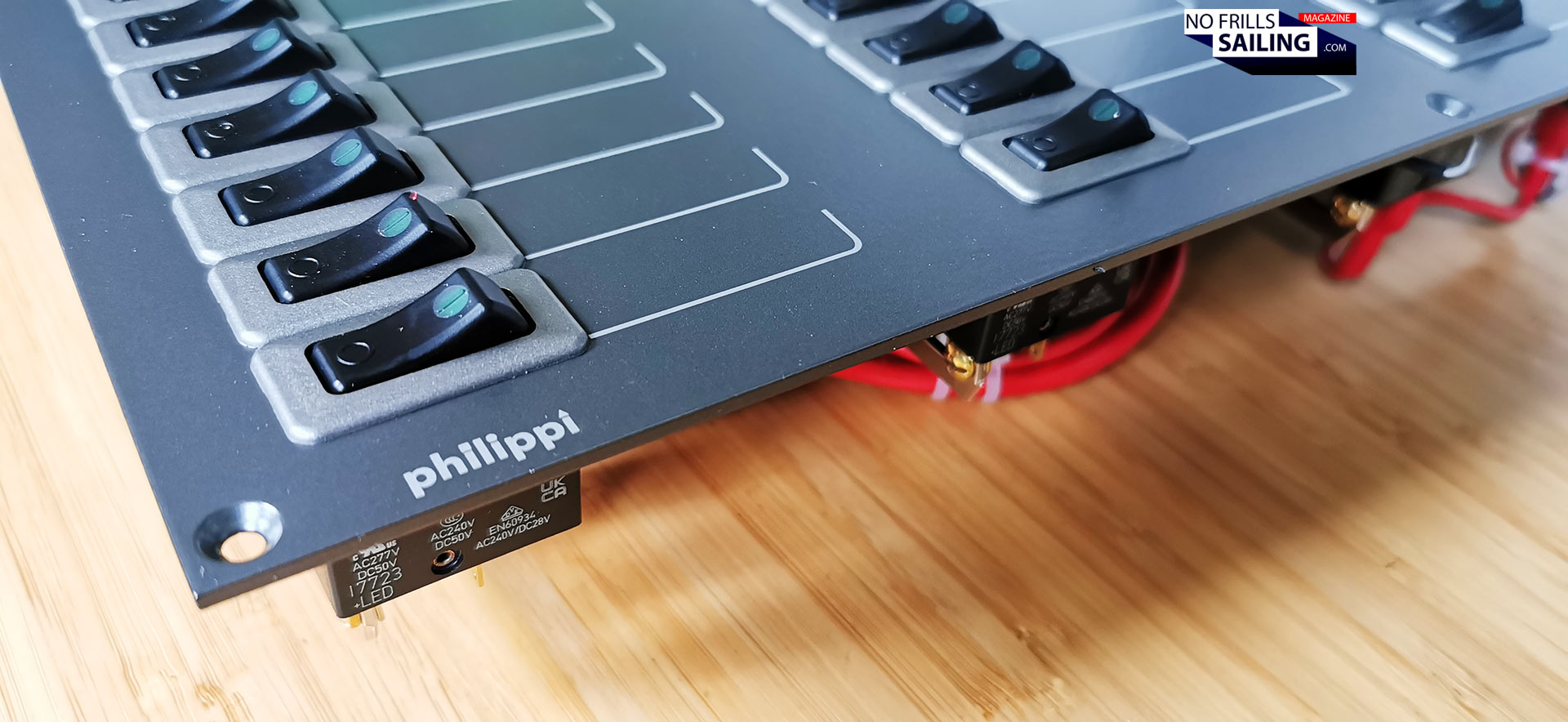
As Heiner Francke, boss of the shipyard that build my yacht, tells me: “There are products that just do the job. No flaws, no problems, no margins and no hassle. These just work. No cheap crap, no bling. Just plain great products which will last, which are easy to install and where there´s a strictly problem-solving policy when something breaks or needs replacement.” Has he assured me, there are not many of such brands. Philippi, surely, is not just one of them, it´s the brand in boating when it comes to high-grade electrical components. Apart from the fact that Philippi is in business for more than 40 years now, they are actually making these products in Germany – and defining mobile electrics ever since.
Queen at the chart table: The main switch panel
I open the parcel and reach for the biggest of the little boxes. It contains the single one item I was so keen to finally see. For some reason I have a very special relationship with main switch panels. Back in the day when I was still refitting my first boat, the King´s Cruiser 33, I insisted to get a Philippi main switch board. There are two other brands known for pretty good products of this kind: Simarine of Slovenia, which has only recently started to try to conquer the market with their more digital-oriented products. And Blue Sea Systems, now part of the Navico Group. Guys, I am German, of course do I buy local …
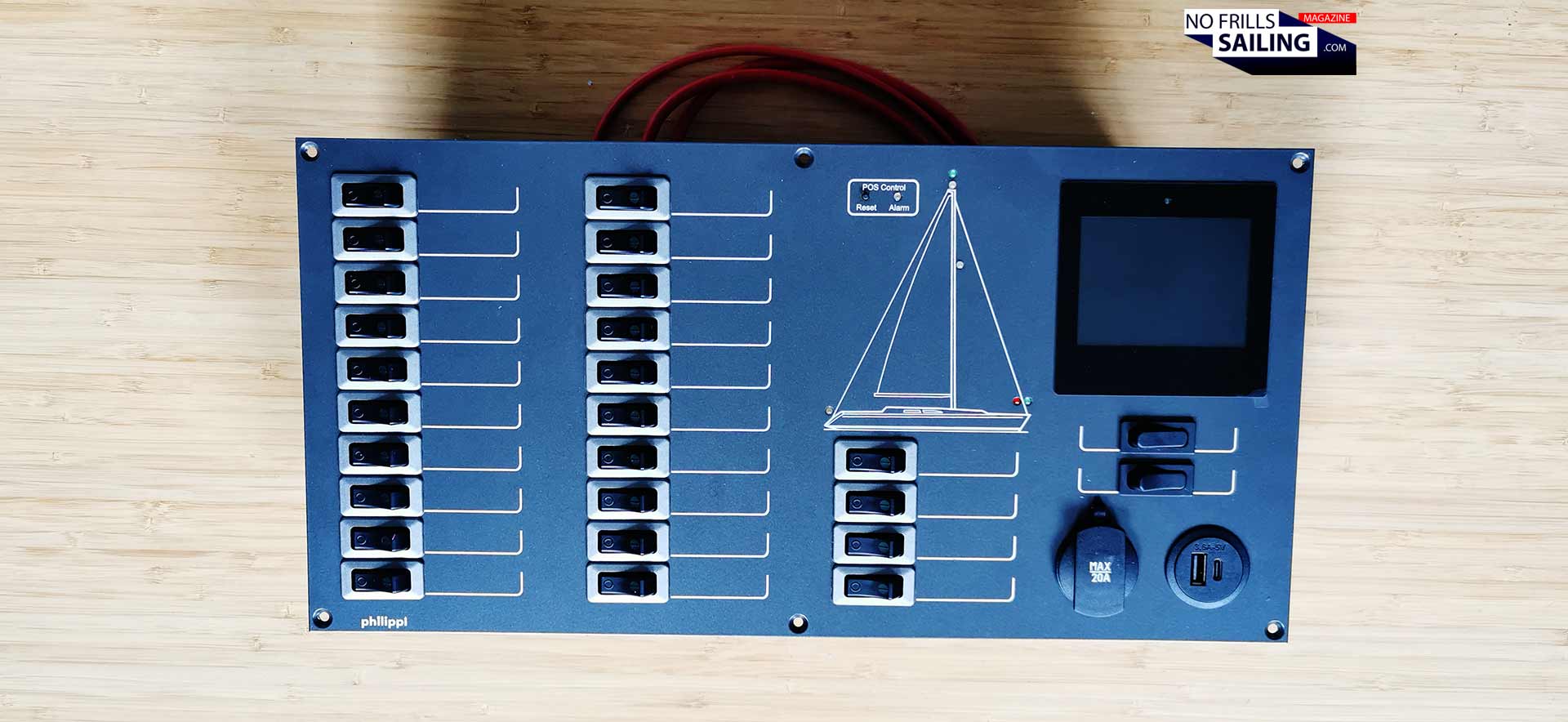
So here´s the beauty: I went for Philippi´s STV 244, the top tier product of their main switch range. Isn´t this thing just awesome? This panel – as every main switch board for any sailboat – basically manages the distribution of the available current arriving from both shore power (230 Volts or 110 Volts in the US) and the batteries (12 or 24 Volts) to the different consumers aboard the boat. It also protects the circuits and therefore the energy consumers from excess voltage. Therefore, it contains a lot of switches, which are indeed little circuit breakers, making it possible to individually engage or shut off different circuits within the boat: Lights, position lights, fridge and so on.

One of the reasons why I went for this particular panel is the dedicated area for the position lights of the yacht. As you can see on the picture, you can switch on all COLREG-related lights like three-color-lantern, engine light, anchor light and simultaneously get a confirmation from the integrated control LEDs on the panel: No more head-wrenching looks to the mast top (which of course I will keep on doing as a good sailor) and no more yelling to my mates on deck if everything works up there.

I also went for this – admittedly not very cheap – product for another display: The STV 244 has an integrated digital display that shows battery voltage and tankage. Especially on longer legs in summer, when the autopilot and fridge are engaged, it can be quite a drain on the batteries. So having an eye on the voltage is absolutely crucial and with this panel especially convenient as I can program discharging alarms. For the tank gauges, I have a clear policy, at last for my own boat: I only went for a sensor in the Diesel tank, not in the two fresh water tanks of the Omega 42.
Don´t save on the hidden parts
Which brings us to the more “hidden” parts. Investing some budget to the clearly visible and daily-use-products like the main switch panel may be a matter of course for you. But all too often in my career as boat dealer I have seen that bargain on the wrong side can lead to a lot of trouble. One of these troublemakers in many contemporary modern boats is the Diesel tank gauge. Back in the day we received quite a lot after sales inquiries: Malfunctions, wrong data and flat out breakdown.
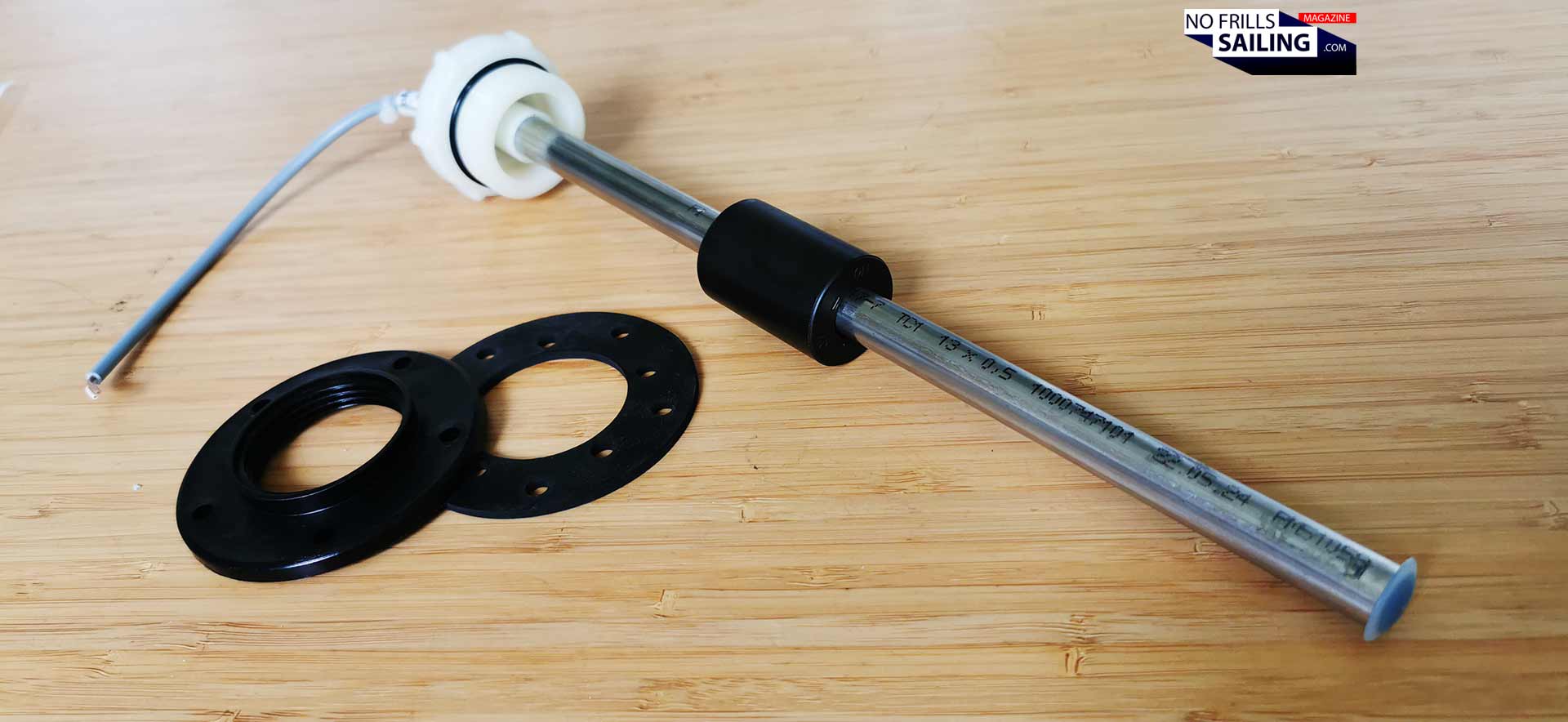
Again, knowing how many liters of fuel are left in your boat´s tank is an absolute essential information for any skipper. You should rely on these data. I am very happy to returning to Diesel propulsion again after 3 years of all-electric sailing because in my view – at least for now – the one and only absolute reliable, enduring and powerful means of driving a boat when there is no wind (or too much) is a Diesel motor. But this all makes only sense if you can rely on the consumption data and moreover, on the information of what´s left in the tank. This is a safety issue. The last thing I want is to run out of fuel in a storm. So, of course I invest in Philippi´s top shelf quality here.
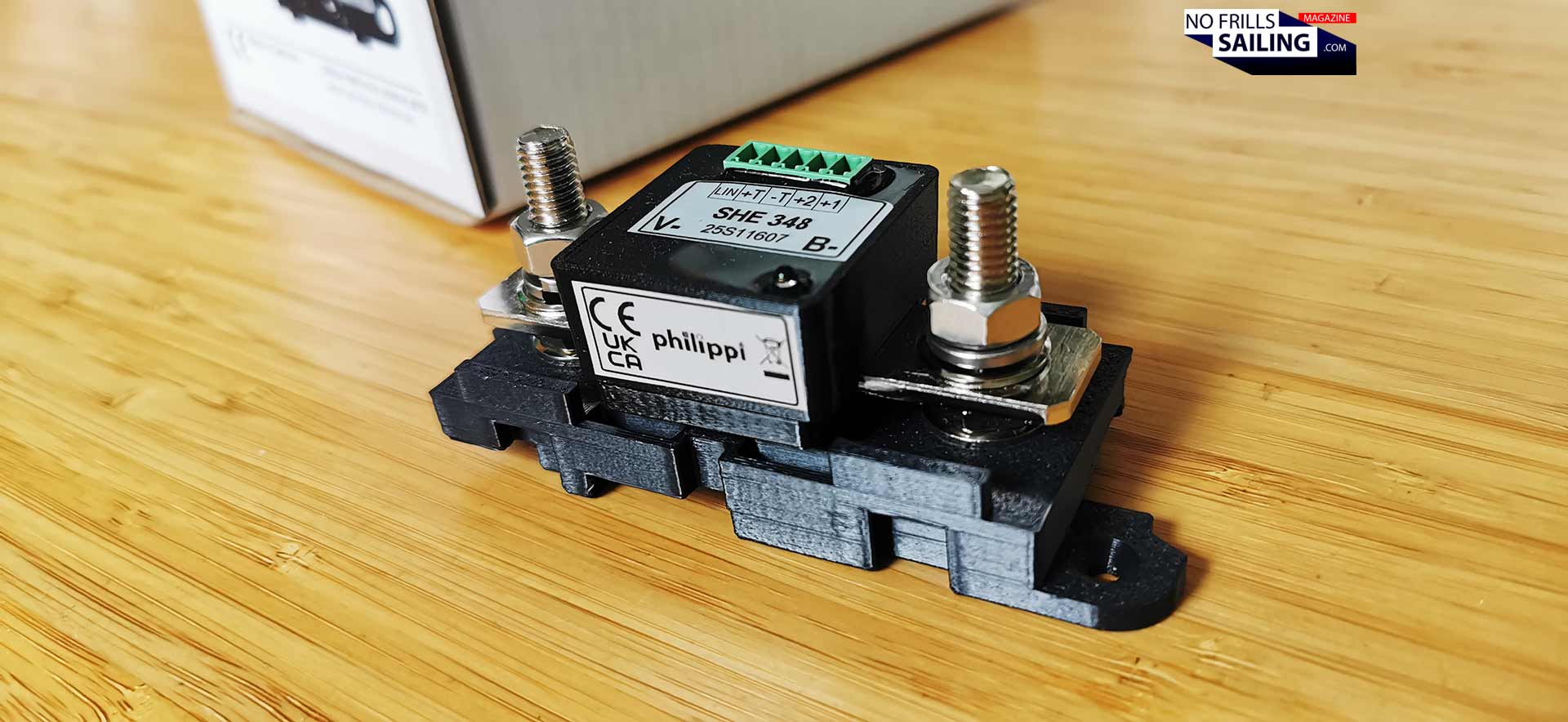
Same goes for the shunt. This little fella is needed to being able to measure currents and voltage of the battery, one of the central parts and a precondition for spotless battery monitoring. My package from Philippi contains a handful more of those little, seemingly unimportant and mostly hidden parts, like breakers. What I wanted to show was the one thing: Behind those wooden panels or underneath your bunk are so many little parts installed which are integral and important to the flawless functioning of your yacht. Much more important in times when digitalization and more and more electric consumers are installed in yachts: Do not save on those! Even if it´s “only” just 12 Volts or 24 Volts, the outcome of such a little black box failing in the middle of nowhere can be annoying at least. Disastrous when the going gets tough.
Electric circuits in yachts – not a children´s playground
I can very vividly remember some nine years ago (is it really nine years ago?!) when I asked the Yachtdoktor to check my then freshly bought boat. He did a pretty interesting baseline study of the yacht I bought as fourth owner, used, of course. I am not an electrician nor do I especially like this particular topic, but even I could see that the wiring that has been done in this boat over the cause of 45 years was … adventurous, to put it mildly. There´s a lesson to be learned here: Even though it´s “just” 12 Volts in the wires, don’t think yacht electrics is a no-brainer. It´s not.
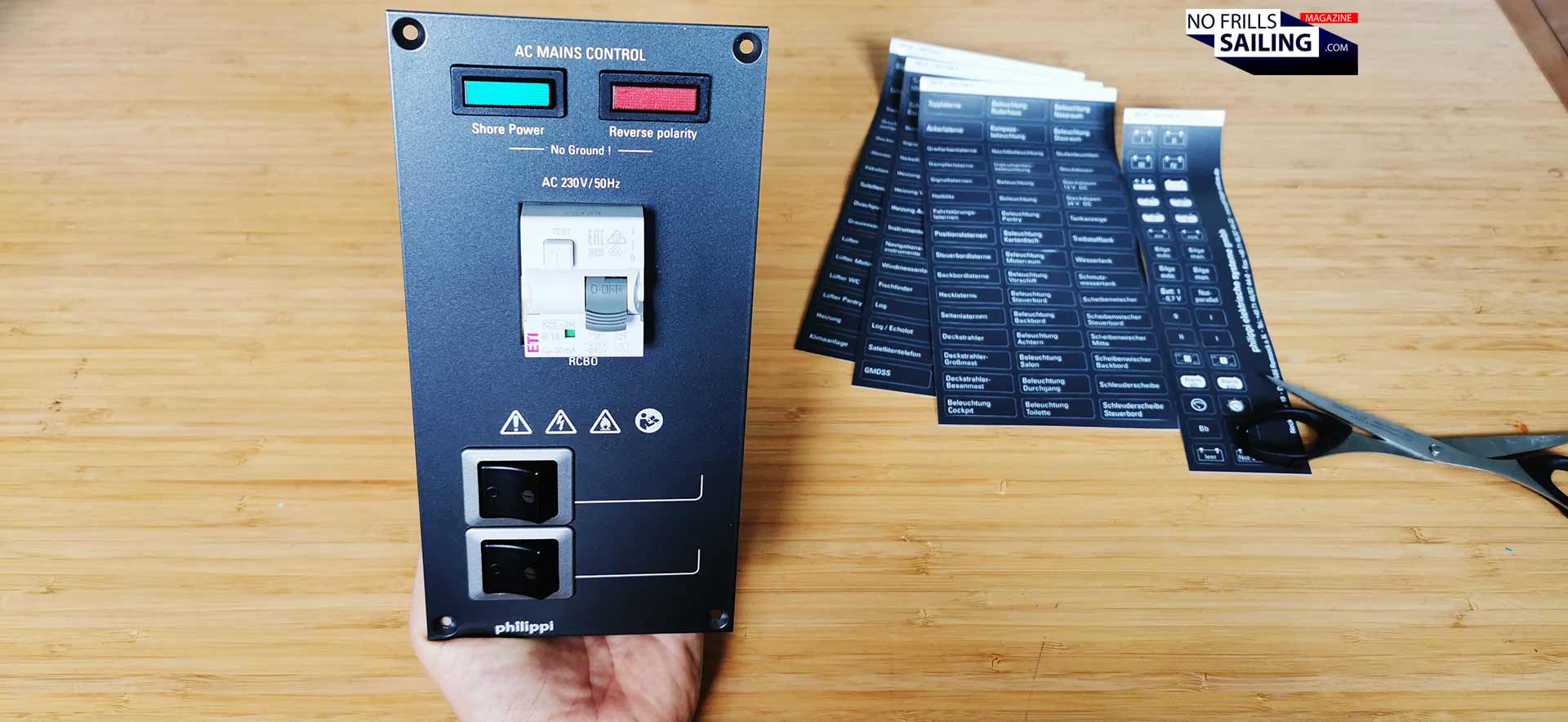
I unpack another of the smaller boxes, the one that contains the shore power unit. Also one of the more important parts on a yacht. This panel basically shows if a correct connection with the 230 Volts ( or 110 Volts for the US version) shore power is established. Again, no more yelling if shore power is available, no more “testing” with consumers – LED lights indicate if there´s power or not. Also, this unit contains two circuit breakers and the so important RCBO leakage protector, both against residual currents and overloads.

Look at it´s backside: Isn´t this just plain out beautiful? So simple, so clean, so neat. I could post a dozen more pictures of “behind the façade” of these products. All have in common that even in the sorted chaos of the wires there´s always order and organization. Even a complete noob in electronics would have to admit that this is just plain beautiful. Here is where the circle is closed: With my Omega 42 I try to build a boat that is as simple and plain as it can be. This philosophy wonderfully echoes within all of the products I am acquiring, up to the point where it oscillates here at the backside of Philippi´s panels. I like it so much!
The beauty of simplicity and quality
But this isn´t exclusively reserved for the complicated parts. The shipyard insisted that we order the terminal bar as well from Philippi. A seemingly simple part again, but so important that you´d better be investing in some high grade product. What does it do? This terminal basically organizes all wiring for all 12 V circuits for the boat. It´s an absolute essential and important part. But look at the sheer beauty of the this thing, I mean, isn´t it like a piece of art?
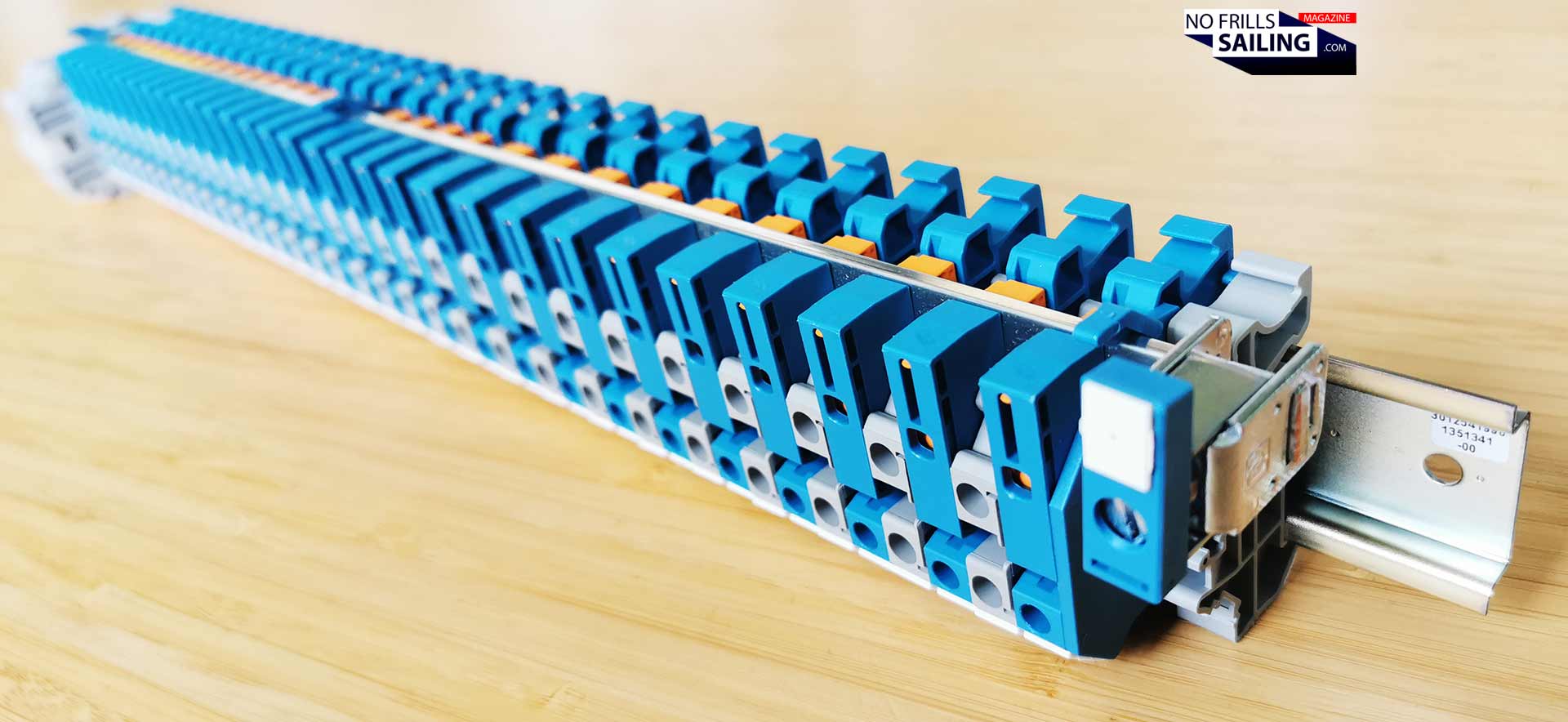
That´s why I went for Philippi. It´s proven quality, absolute reliability, “Made in Germany” not far away from Lake Constance and many, many generations of skippers relied and still rely on their products. As Heiner, the boss of the shipyard said: “You could easily have saved half of the budget if we had gone for cheap China or some no-name products. Easily.” But as I stated in my last article on children´s life jackets: There are simply areas in your sailboat where there´s no margin for error. Stuff that has to work, no matter what. Stuff that must not fail. You better get parts you can trust. And I trust these things!
Let´s get it installed!
Now, happy as I am, I press some of the buttons of this wonderful main switch panel in “dry” mode and wonder how it will be looking – and much more, how it will be working – when it is installed, up and running at the nav station of ALPHA. In two weeks my next visit to the shipyard is scheduled, that´s when I will hand over this package to the guys. Putting back everything into their cardboxes, that´s it for now.
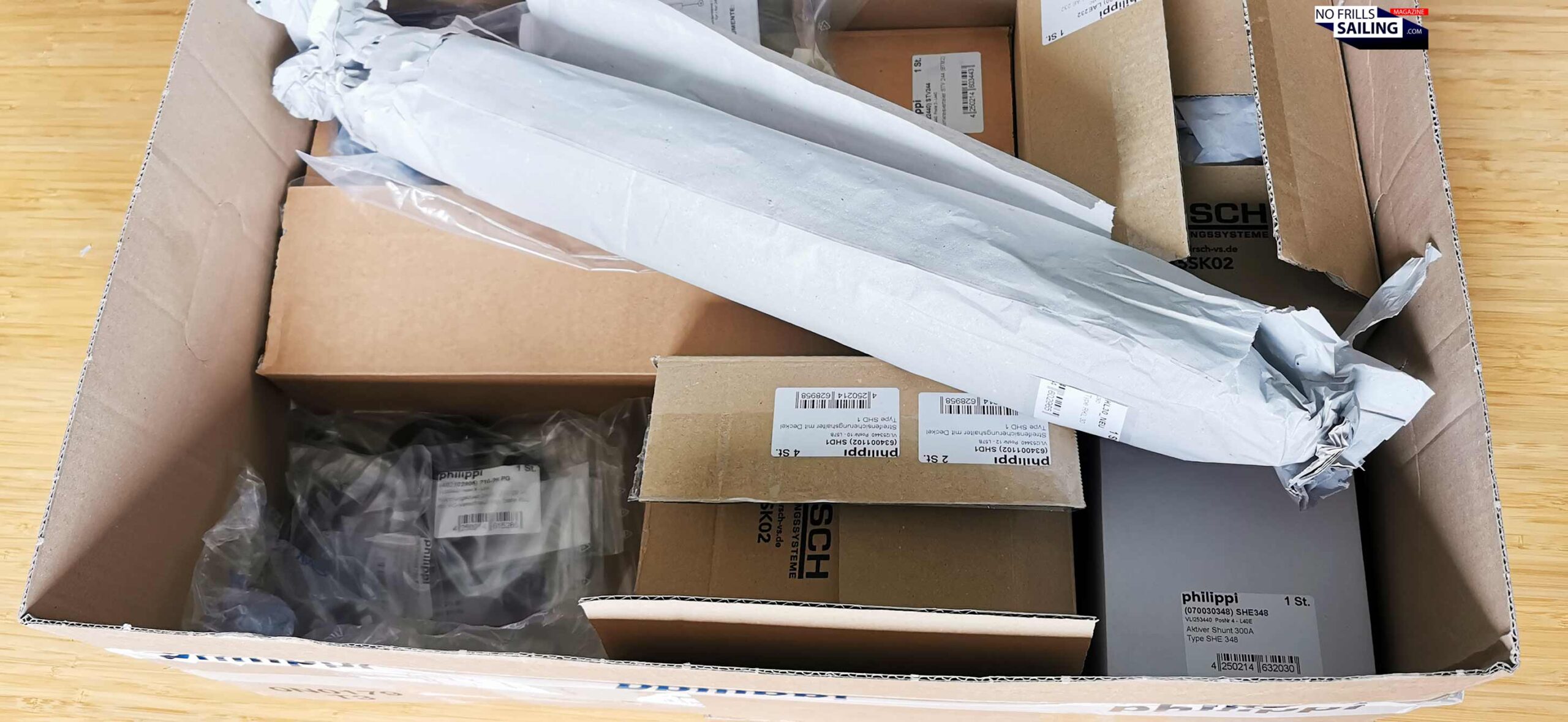
As I stated at the beginning of this article: Other electrical components will be sourced from “ordinary” or no-name suppliers to complement the parts needed to fully set up the 12 and 230 Volts- circuits of the yacht. I hope I will be able to show you guys soon how it all works out in the ship.
Connected articles you might also find interesting:
Baseline study in a used boat for electric re-wiring
How to detect leakage currents on your boat
Thinking about energy management aboard sailboats
